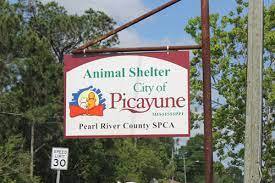Thanks to Safe Harbor partners, contributors, supporters
Published 3:40 pm Wednesday, July 18, 2007
Editor;
On June 26, we were honored with an award presented by WLOX-TV in Biloxi, Mississippi for what was made possible, through Safe Harbor, for over 5,600 children in South Mississippi. I don’t believe that we think of ourselves here at the Lower Pearl River Valley Foundation (LPRVF) as “South Mississippi Heroes”. Rather, I believe our role was to serve as more of a “conduit”, the means by which we made those financial resources forwarded to us available to provide summer and after-school camp activity for the past two years following the advent of Hurricane Katrina.
Martin Lehfeldt, the president of the Southeastern Council of Foundations (SECF), wrote an outstanding recapitulation of what we experienced on our last visit together to a hurricane ravaged area — not in South Mississippi — but in parts of New Orleans destroyed by the storm (We were visiting there as members of the National Advisory Committee for the Hurricane Fund for the Elderly.) In this article, in the May issue of the SECF’s Interchange, he prefaced some of his comments with this statement:Editor;
On June 26, we were honored with an award presented by WLOX-TV in Biloxi, Mississippi for what was made possible, through Safe Harbor, for over 5,600 children in South Mississippi. I don’t believe that we think of ourselves here at the Lower Pearl River Valley Foundation (LPRVF) as “South Mississippi Heroes”. Rather, I believe our role was to serve as more of a “conduit”, the means by which we made those financial resources forwarded to us available to provide summer and after-school camp activity for the past two years following the advent of Hurricane Katrina.
Martin Lehfeldt, the president of the Southeastern Council of Foundations (SECF), wrote an outstanding recapitulation of what we experienced on our last visit together to a hurricane ravaged area — not in South Mississippi — but in parts of New Orleans destroyed by the storm (We were visiting there as members of the National Advisory Committee for the Hurricane Fund for the Elderly.) In this article, in the May issue of the SECF’s Interchange, he prefaced some of his comments with this statement:
“Yes, this column is going to be about the Gulf Coast in a post-Katrina period, so if you’re tired of the subject, stop reading right now. But if you’re tired of the subject, you shouldn’t be. It’s still way too early to let it slip your mind.”
Martin Lehfeldt was right on target when he stated that it’s still way too early to let what happened as a result of Katrina to slip your mind. There are still thousands of vacant slabs where homes once stood and families once lived. We are still a long way away from resolution for thousands of families who have not been able to successfully negotiate insurance settlements or to find jobs. It will be years before the Coast is fully recovered. But, we are satisfied that we have done what we could do to provide for those whom we know to be most vulnerable, our children.
With the close of the 2007 Safe Harbor Summer Camp program, we are in the process of phasing out Safe Harbor, per se. However, we are very fortunate in that, under the auspices of the LPRVF, the Robert Wood Johnson Foundation, the BlueCross/BlueShield of Mississippi Foundation, and the school districts, we are gearing up for “full steam ahead” on a Healthy Lifestyles project which was interrupted by the onset of Katrina. Fortunately, we will be able to carry across some of the program components that were developed as a result of Safe Harbor to assist in implementing our Healthy Lifestyles project in the school districts we serve. These components have to do with physical activity through physical education programs, better and more wholesome nutritional practices in the schools, and the removal of food and drink substances that promote the onset of obesity and Type II diabetes. Hopefully, the transition from Safe Harbor program activity to the Healthy Lifestyles program activity will be almost seamless.
The important thing is: We have gained so much from our partners and contributors who have worked with us over the past two years. As you will note from the attached list of contributors, resources forwarded from coast-to-coast —Seattle, Washington to Sarasota, Florida — made it possible for us to help provide a better quality of life for over 5,600 children and their families. We would certainly be remiss if we did not take this opportunity to express our sincere appreciation to all of you who provided financial and related support as we worked to do what we could during the time we are trying to return to some semblance of normality on the Mississippi Gulf Coast.
Thanks again, so very much, for your help and your support during this process.



